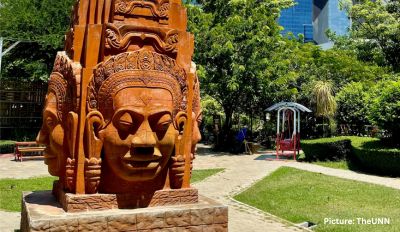The latest biographical film on Savarkar offers a compelling narrative, catering not just to his admirers but also to those unfamiliar with his legacy or critical of it. It delves into the complexities of Savarkar’s life, highlighting his pivotal role in India’s struggle for independence and the sacrifices he made. Despite facing a decade of harsh imprisonment in the British penal colony of Kālā Pānī, Savarkar remained steadfast in his commitment to the cause.
While some may argue that the film portrays Savarkar in a glorified light, it undeniably presents factual accounts that challenge common perceptions. A central theme of the biopic is the contrast between Mahatma Gandhi and Savarkar, emphasizing their differing approaches to achieving Indian independence. Unlike Gandhi’s advocacy for non-violence, Savarkar championed armed resistance, earning him the fear of the British authorities.
Savarkar’s redefinition of the 1857 Sepoy Mutiny as the First War of Indian Independence and his inspiration drawn from figures like Mazzini are depicted in the film. It also explores his establishment of “Abhinav Bharat,” mirroring Mazzini’s “Young Italy,” to promote nationalist sentiment and unity.
Despite covering a vast expanse of history, the film maintains a brisk pace, though some editing could have streamlined the narrative. Portrayals of historical figures such as Gandhi and Churchill occasionally border on caricature, detracting from the otherwise factual presentation.
The harrowing experiences of Savarkar in Kālā Pānī, including torture and encounters with brutal jailers, are vividly depicted. While the extensive portrayal of torture may seem excessive, it underscores the exceptional suffering endured by Savarkar, orchestrated by fellow Indians under British direction.
The biopic raises pertinent questions about the legitimacy of resistance against colonial oppression. It suggests that India’s independence ultimately came through the threat of violence, forcing the British to recognize the futility of continued colonial rule.
A notable aspect addressed in the film is Savarkar’s infamous mercy petition, contextualizing it within his broader strategy for the freedom struggle. His pragmatic approach, rooted in legal training, aimed to secure the release of all prisoners, prioritizing the larger cause over personal liberty.
Furthermore, the film challenges misconceptions about Savarkar’s Hindutva ideology, portraying it as inclusive rather than exclusionary. According to Savarkar, anyone identifying with the Indian homeland and culture could be considered a Hindu, irrespective of religious affiliation.
In essence, the Savarkar biopic offers a nuanced portrayal of a controversial figure in Indian history, inviting viewers to reassess their perspectives on his contributions to the nation’s freedom struggle. Whether one admires or opposes Savarkar’s ideology, the film provides valuable insights into a pivotal era of Indian history.











